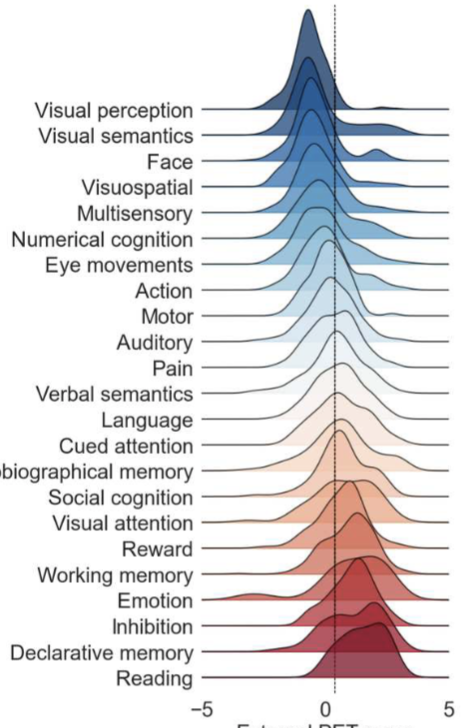Do you feel drained after working on a hard cognitive task for a while, and you wonder why? Cognitive fatigue is real, and it's your brain's way of telling you it needs a break. This exhaustion happens because your brain, especially during intense mental activities, uses up a significant amount of energy.
The brain needs a constant flow of energy to work, especially the human brain, which uses a lot of energy compared to the rest of the body. So, how does the brain spread out this energy? Even though the brain's structure has evolved, and there's a big range in brain sizes and the number of nerve cells across different mammals, the basic way neurons are built and the energy they use to send signals haven't changed much. This shows that, no matter how complex and different brains are, they have a remarkably efficient way of managing and using energy for nerve cell communication.
However, compared to other species, the human brain stands out for its high energy use in relation to the body's overall metabolism. How is this metabolic energy spread throughout the brain?
Methods
Thirty healthy participants from three independent cohorts were included in the study. The researchers measured the energy costs of neuronal signalling by looking at how the glucose use in a small brain area relates to its connections and activity across the cortex.
The participants underwent scans using a combined positron emission tomography (PET)/magnetic resonance imaging (MRI) machine. This allowed the researchers to measure both the brain's glucose metabolism rate and the overall level of coordinated signalling across about 12,000 cortical areas, which showed the extent of functional connectivity.
Results
The researchers found a consistent pattern of different energy needs for signalling pathways in the data from individual participants. Specifically, the energy required for signalling in fronto-parietal networks of the brain was up to 67% higher than in sensory-motor networks. The fronto-parietal network, also called the central executive network and the task-positive network, is involved in executive functions and hard cognitive work.
Brain surface showing regions significantly deviating, specifically with higher (red) and lower (blue) energetic costs of signaling. Pie chart summarizes the distribution of regions with varying energetic costs. Note: from Castrillon et al. (2023), page 4, (CC BY-NC).
In addition, they found that brain regions rich in slow-acting neuromodulators, such as serotonin, dopamine, and noradrenaline, which act as general modulators of brain-wide circuits, have higher energy demands. The figure below shows that regions with strong neuromodulator activity particularly contribute to complex functions such as memory processing and reading, coded in red, but are less prominent in activity patterns of sensory-motor processing functions, coded in blue.
Color-coding illustrates the increasing rank (blue > red) of average energetic costs from simple sensory processing to higher cognitive functions. Note: from Castrillon et al. (2023), page 4, (CC BY-NC).
What this means
If you're wondering why you experience cognitive fatigue after a few hours of hard cognitive work, it's because the brain's fronto-parietal networks, which play a crucial role in managing complex cognitive tasks, demand significant energy. In addition, brain areas recruited in hard cognitive tasks are rich in slow-acting neuromodulators, such as serotonin, dopamine, and noradrenaline, which act as general modulators of brain-wide circuits and have higher energy demands.
This is why activities requiring high levels of concentration and problem-solving can be particularly exhausting. Understanding these energy dynamics offers valuable insights into optimizing cognitive performance and underscores the importance of balancing mentally demanding work with adequate rest and recovery to maintain overall brain health and efficiency. Sleep is often underrated in our Western society, focused on performance.
Reference:
Castrillon, G., Epp, S., Bose, A., Fraticelli, L., Hechler, A., Belenya, R., Ranft, A., Yakushev, I., Utz, L., Sundar, L., Rauschecker, J. P., Preibisch, C., Kurcyus, K., & Riedl, V. (2023). An energy costly architecture of neuromodulators for human brain evolution and cognition. Science Advances, 9(50), eadi7632. https://doi.org/10.1126/sciadv.adi7632
Related articles:
willpower
How to Train the Brain for Greater Willpower
Have you ever wondered why some people find it so hard to [...]
Sleep
The Power of Napping: Boosting Brain Health and Delaying Ageing
In a fast-paced world that often glorifies productivity and discourages rest, it [...]
willpower
The Hidden Costs of Self-Control
Do you wish you had more self-control? The ability to resist temptation [...]
willpower
Letting Go of Willpower: Addressing Underlying Issues for Better Self-Control
The concept of willpower has evolved over time, from a Victorian-era emphasis [...]
Decision-making
Don’t leave important decisions to the end of the day when your brain is tired
Our single focus on performance, productivity, and results is harming us. Even [...]
Sleep
The Most Important Contributor to High Performance
In coaching and business circles, the overwhelming goal is high performance. There's [...]


